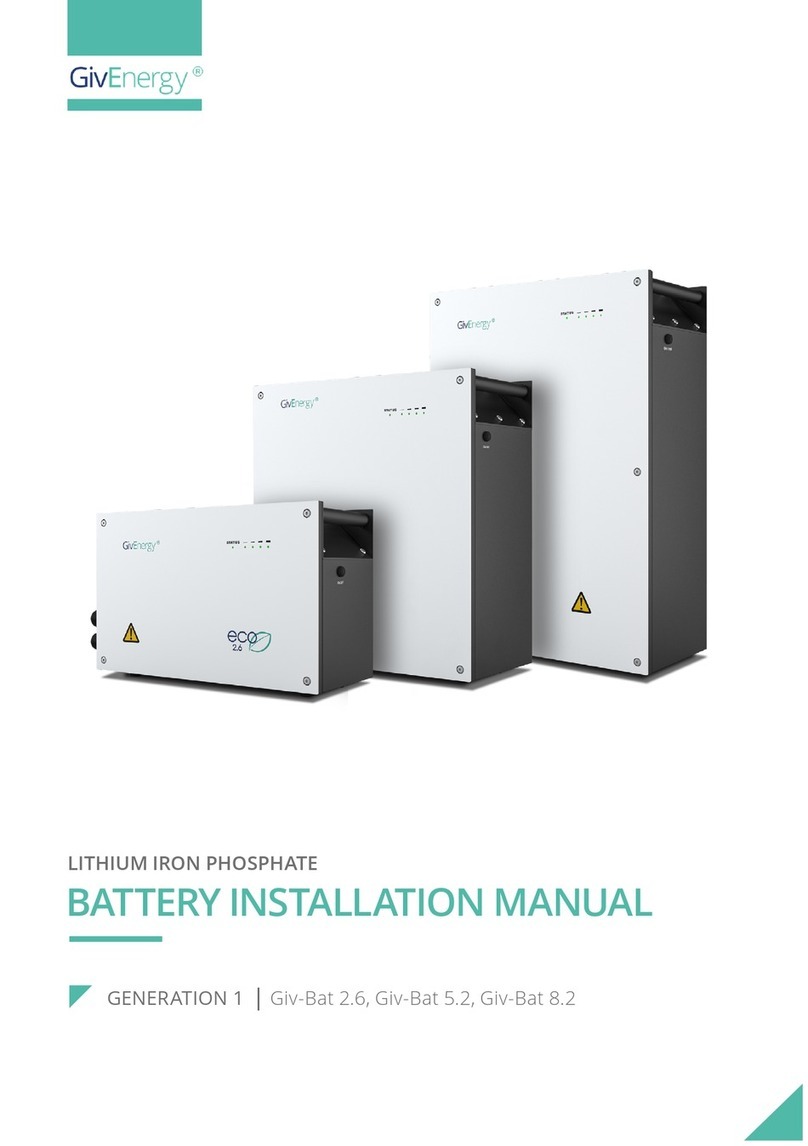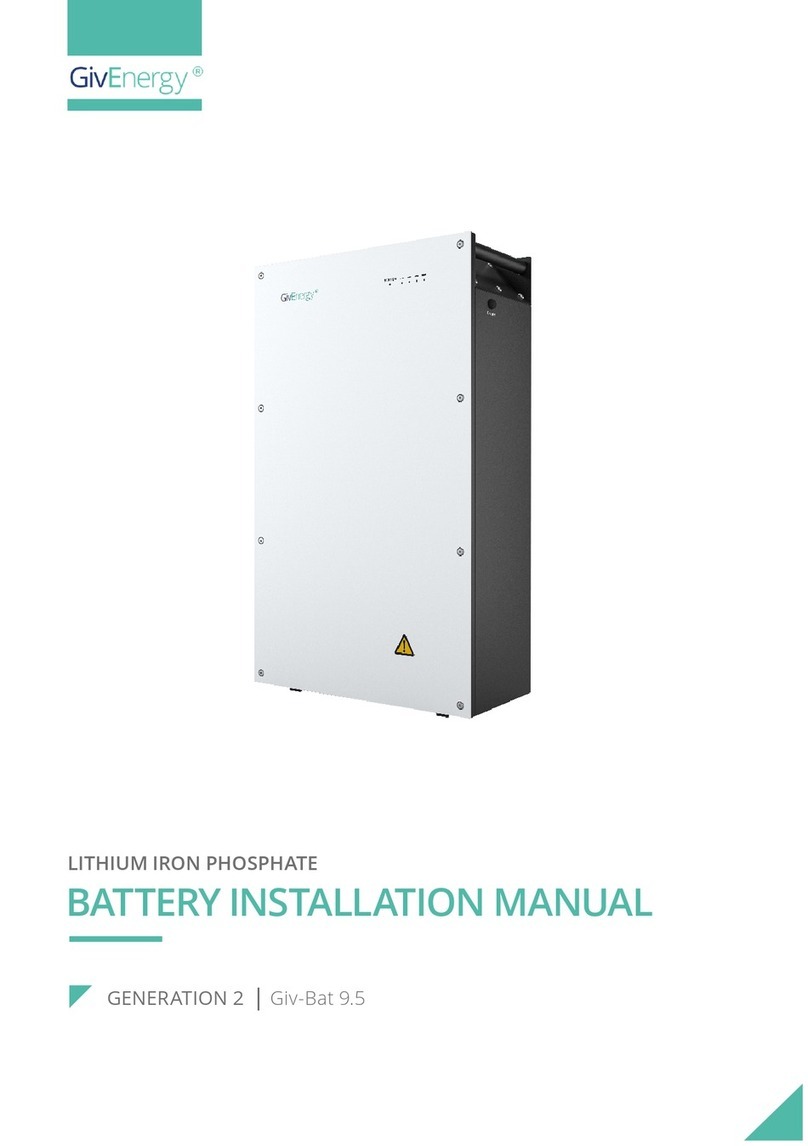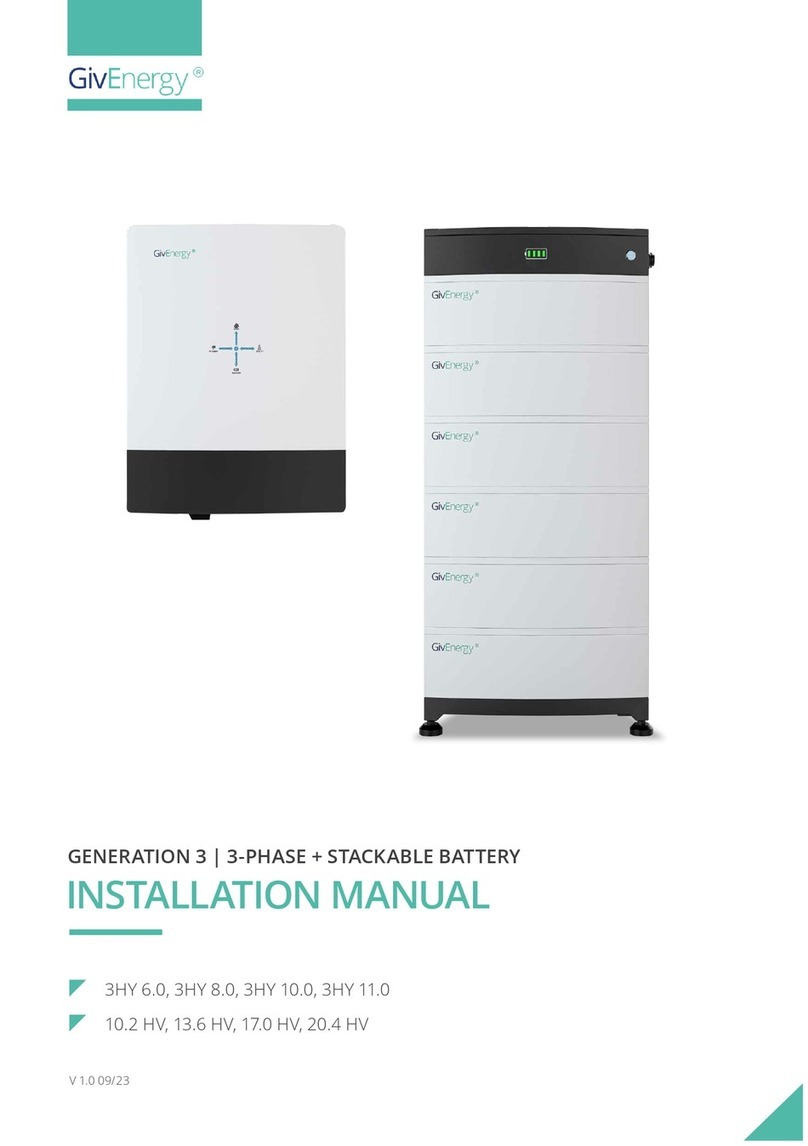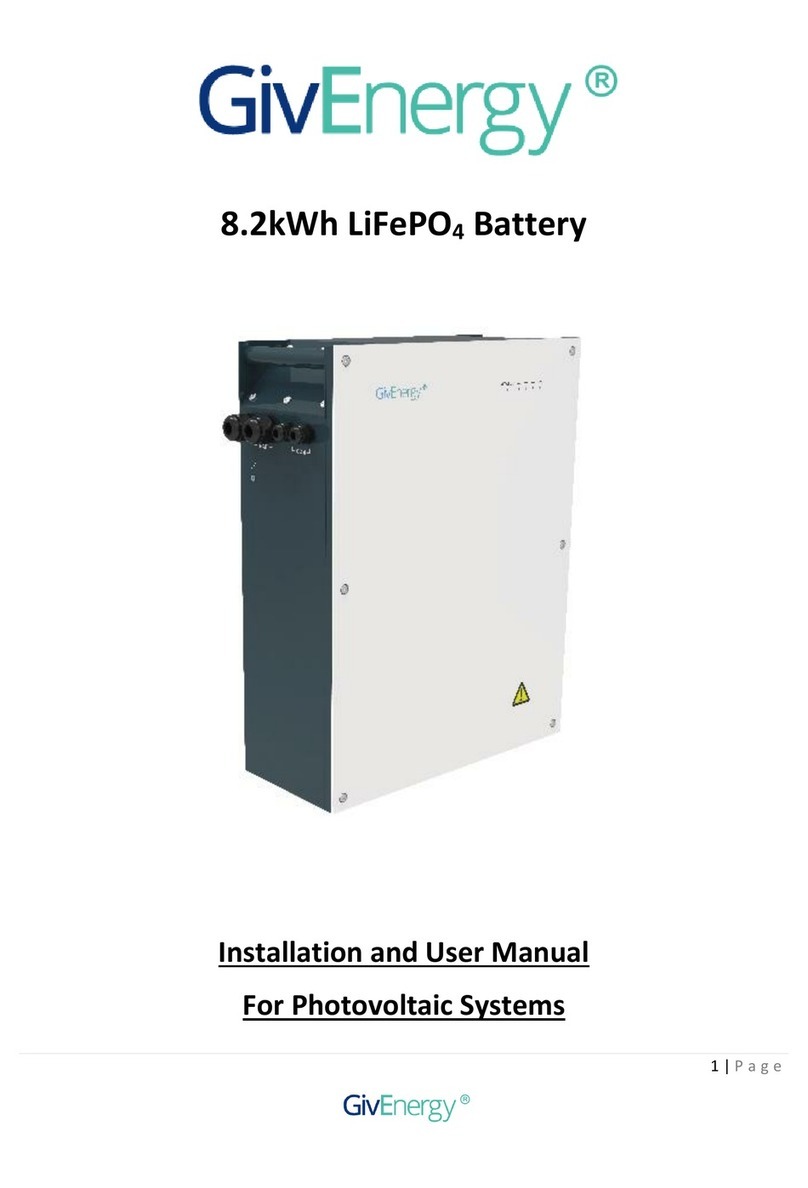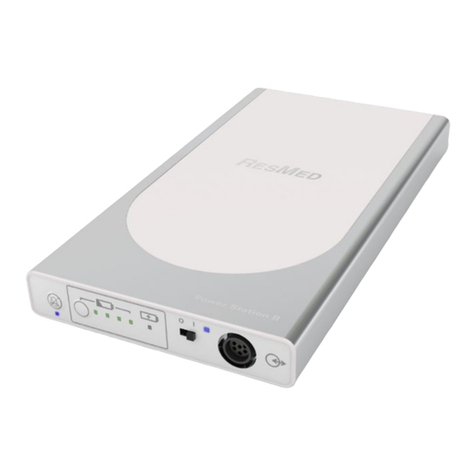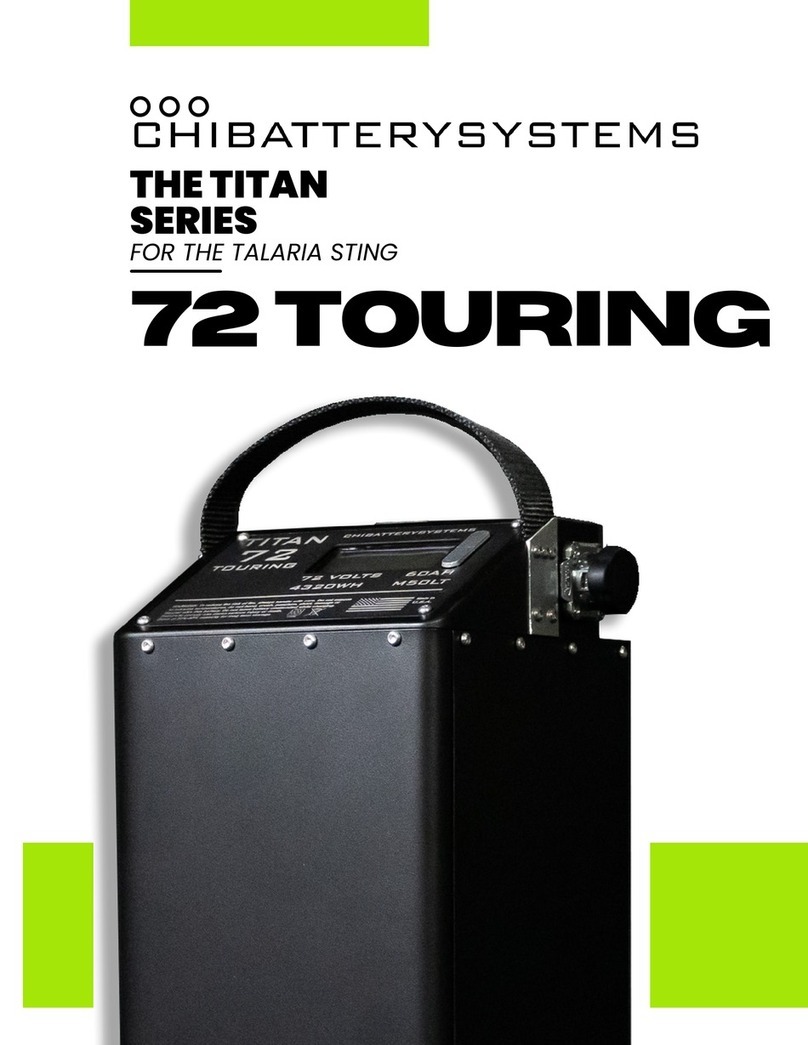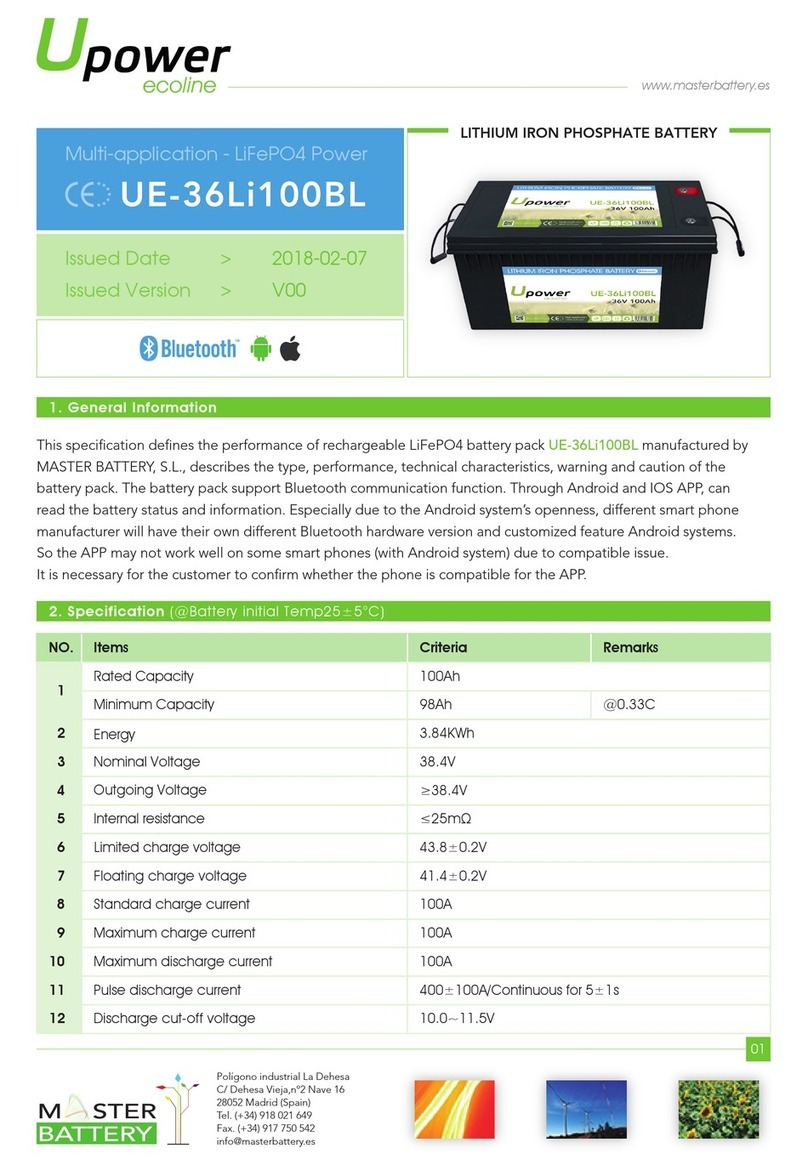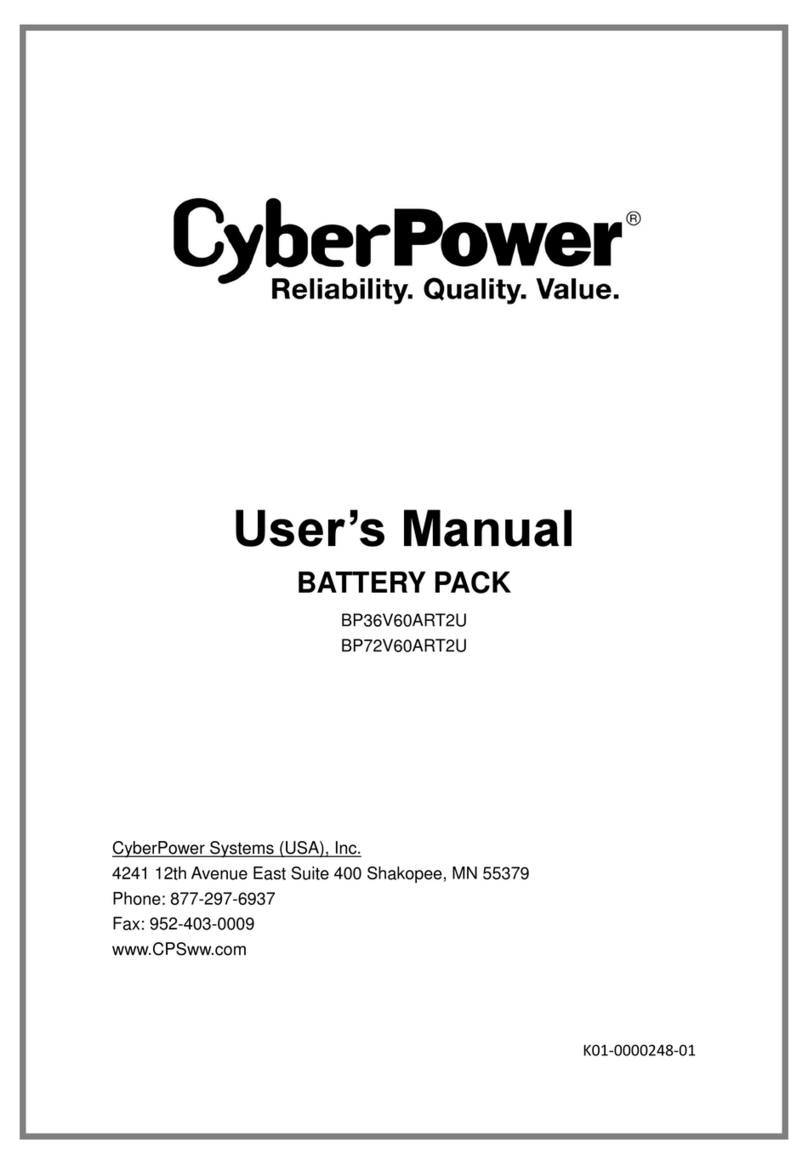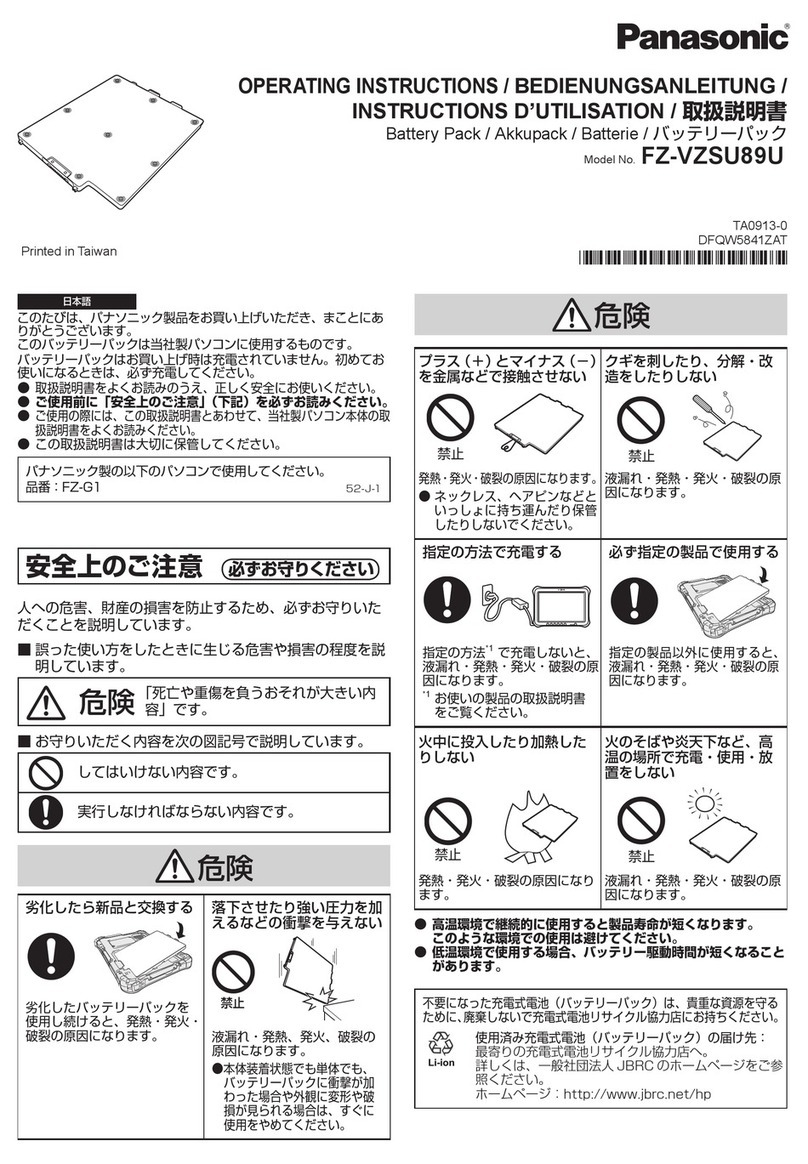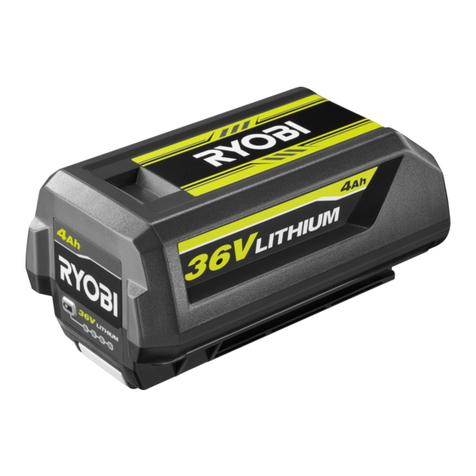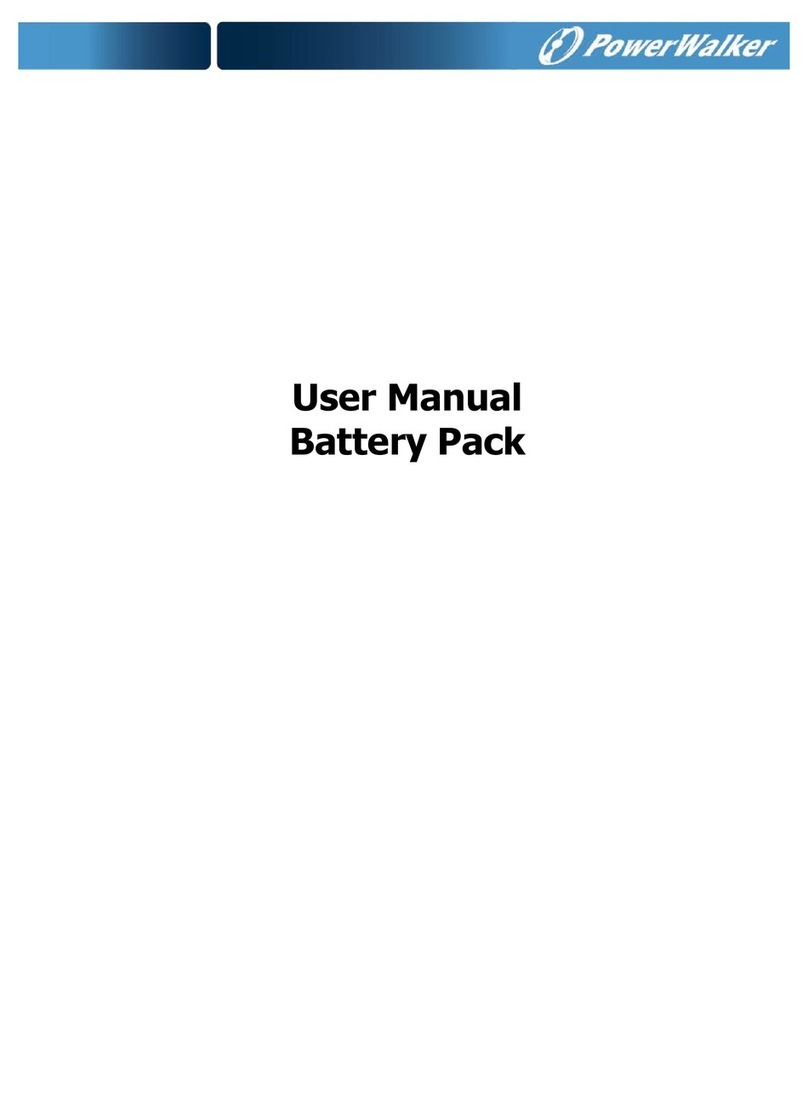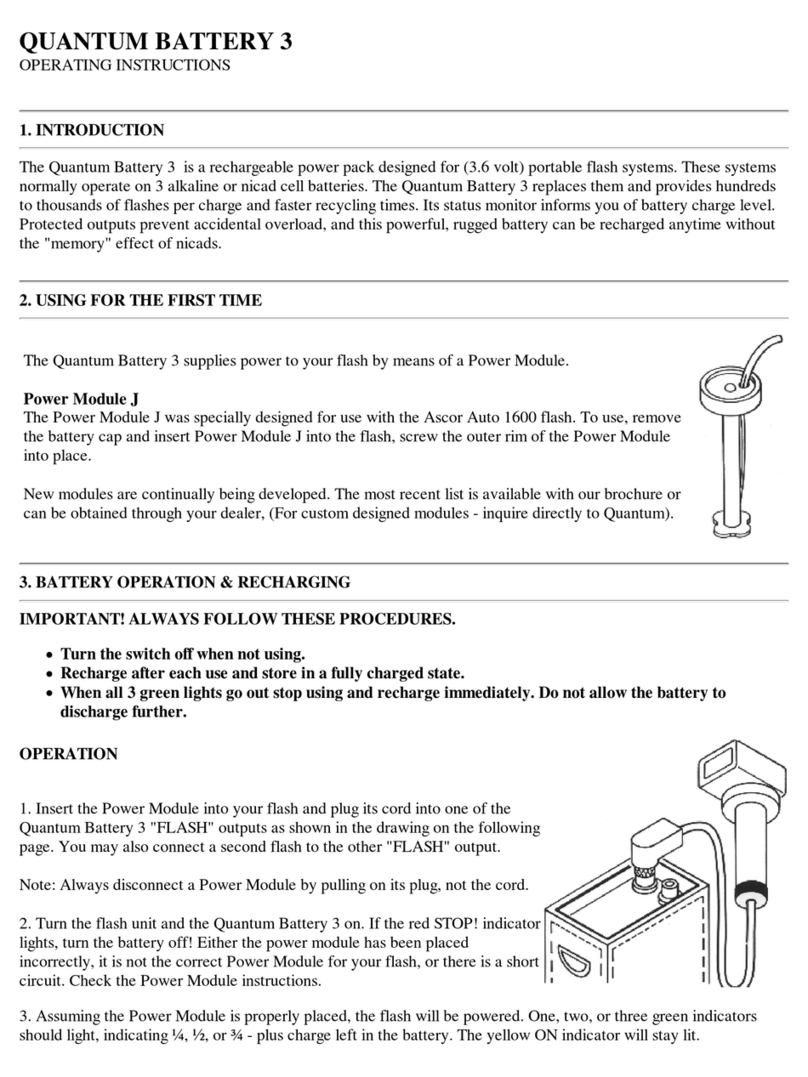GivEnergy 64 KWH User manual

INSTALLATION MANUAL
SME BATTERY CABINET
COMMERCIAL ENERGY STORAGE SOLUTIONS
64 KWH

SAFETY
It is critical that the below safety instructions are carefully read and understood. High voltage DC may
be present within the battery cabinet even when turned off .
Before removing any covers or batteries the battery cabinet should be isolated from the PCS and DC
Cabinet if fi tted
The installation order of the battery packs and high voltage box is critical, incorrect installation
could result in serious damage
Pay particular attention to this instruction, as it represents risk of damage to the
product or injury
Only trained and qualifi ed electricians should install or maintain the battery cabinet
The battery cabinet is heavy and will require lifting equipment in all circumstances
The battery cabinet must only be moved when it is empty, under no circumstances can it be moved
once the batteries are installed
Safety instructions
Signs and symbols in this guide
For technical support call 01377 252 874 or email commercial@givenergy.co.uk
Item Item name
Alarm LightA
Run LightB
Door handleC
DEmergency stop (EPO)
COMPONENTS
AB
C
D
Required tools and equipment
Gloves
Screwdrivers
Socket/spanner set
Suitably rated lifting equipment*
*The battery packs weigh 76kg. It is advised that these are not lifted manually and the use of a lifting
device is recommended. Please speak to a GivEnergy representative if uncertain.

Delivery and unpackaging
Key dimensions
The battery cabinet and battery packs are delivered on 2 separate pallets.
The battery cabinet will be delivered palletised in a cardboard box:
The battery packs and high voltage box are delivered on one pallet:
The battery packs have an electrical connector block on their rear, do not stand the batteries up as
this could damage the connector.
HANDLING INSTALLATION ENVIRONMENT
Remove all packaging and foam protection1.
Remove all outer packaging1.
Remove the lower black trim on all sides of the battery cabinet – be careful not to lose any of the bolts2.
Carefully lower the battery boxes one at a time, using a lifting aid if required
2.
Unbolt the battery cabinet from its pallet on all 4 corners3.
Unbox batteries one at a time, taking care not to drop them3.
Lift the battery cabinet to allow removal of the pallet, being careful not to put any body part in a
potential trap area/drop zone
4.
Remove all foam and plastic protection
4.
The battery cabinet can now be positioned using lifting equipment or a standard pallet truck5.
The key to the door is attached to the handle6.
Weight (kg)
To ensure optimal operation and lifetime of the system, it must be installed in an environment that
meets the following criteria at a minimum:
The battery cabinet must have a suitable airfl ow to ensure optimal operation. All the battery packs are
natural convection and do not have fan assistance. For more details please see the Ventilation guide.
It is recommended that access to the area the system is located within is restricted. A locked door
prevents immediate danger to the general public, however the emergency stop button is accessible on
the front door.
The battery cabinet must only be installed internally on level fl at ground, it is possible to fi x it to the
fl oor on each corner if required.
Environment criteria
Ventilation
Access
0 to 95% non-condensing humidity
<5000m altitude
In an area with adequate ventilation
0°C to 40°C
Component
452 x 664 x 134600 x 800 x 2050 452 x 664 x 134
Battery Pack (7.6kWh)Battery Cabinet
76200
HV Box
40
Size (WxDxH)

ELECTRICAL AND DATA CONNECTIONS
For technical support call 01377 252 874 or email commercial@givenergy.co.uk
All battery packs and the high voltage box must be secured with 2 bolts on each side before powering up
the battery cabinet.
All power and data cables should be fed through the cable entry cover at the bottom of the battery rack
and then out of the grommets on the under tray. The cable entry cover is removable if additional access is
required.
Note: Ensure that all grommets are located correctly to avoid sharp metal edges damaging the cables.
When installing multiple 64kWh battery racks, a DC cabinet will be supplied. This cabinet off ers an
additional level of control and protection as well as a position to connect the battery racks together.
When a DC cabinet is provided the battery racks will take AC input from here. The DC cabinet is then
powered from the PCS EPS output terminals (see DC Cabinet Installation Manual for more details).
It is critical that the high voltage box is installed into the bottom slot of the battery cabinet
fi rst and all input and output connections are installed before inserting any battery packs.
Ensuring that both the MCCB and power button on the high voltage box are both OFF, the batteries can be
installed in the order shown on the next page.
Battery packs must only be installed after the high voltage box is installed and connected.
Assembly
Multiple battery cabinets
EMS & power cover
High voltage box
Battery packs
UPS
Battery 9
Battery 8
Battery 7
Battery 6
Battery 3
Battery 5
Battery 2
Cable entry cover
Battery 4
Battery 1
HV Box

ELECTRICAL AND DATA CONNECTIONS
The high voltage box front cover has sockets for DC output and AC input.
The AC input is used to power the UPS at the top of the battery cabinet, this ultimately provides power
to all control circuits.
The EMS is located in the top of the battery cabinet and provides control to the whole system. When
multiple battery cabinets are installed only one EMS is utilised and this will be located within the DC
cabinet.
The EMS communicates with all battery packs, high voltage boxes, PCS, metering and the internet via either
LAN or WiFi.
The GivEnergy engineer will help install and confi gure the LAN or WiFi connectivity and ensure
communication with the online portal.
DC output
AC input
Data connections
All connections in and out of the battery cabinet/high voltage box must be made
prior to installing the battery packs.
Ensure the PCS DC switch is in the off position and use the supplied cables. Then, connect the ring terminal
end to the PCS DC input terminals. Or, if fitting multiple battery racks, connect them all into the DC
cabinet’s DC input terminals first, ensuring correct polarity.
Using the wiring harness provided, connect into the battery cabinet output terminals in the bottom right
hand side of the PCS. If a DC cabinet is installed this supply will connect into the DC cabinet. See PCS or DC
cabinet installation manual for details.
For single battery installations - The high voltage box has 2 data connection points, one is to communicate
with the PCS1, the other is for meter communication2. Use the cables supplied, these can be extended as
required.
1See PCS installation manual for more details
2See Meter installation manual for more details
For multiple battery installations – Only the PCS data connection is used to connect the terminals in the
bottom of the DC Cabinet.1
1See DC cabinet installation manual for details
SYSTEM SETUP

POWER PROCEDURES
For technical support call 01377 252 874 or email commercial@givenergy.co.uk
INITIAL TESTING / COMMISSIONING
All GivEnergy commercial storage solutions include an on-site commissioning service. Our engineer will
ensure correct communication with meter, battery packs, EMS and PCS. To aid in this testing, the engineer
will initially run a low power test in ‘manual’ mode — setting the system to complete a 5 minute charge
followed by a 5 minute discharge and a rate of 10kW.
Once this is complete, where electrical supply parameters allow, a full power charge and discharge will be
ran for a period of 15 minutes in each direction. Depending on electrical limitations on site, this test can be
adjusted to power levels with site tolerance
Any additional tests can now be completed including system specifi c operation such as back up power.
Once the above testing is successfully completed, the system will be set to run in its agreed operational
modes and a demonstration can be given to the client and/or installer.
Our engineer will supply commissioning paperwork once complete, the date of which will commence the
PCS warranty.
Once all connections are terminated correctly with satisfactory test results, the following turn on
procedure should be followed:
In an emergency press the EPO button on the PCS fi rst then all battery cabinets/racks.
Power-on procedure
Emergency shutdown procedure
Standard shutdown procedure
Release the emergency stop button if pressed
1.
Turn the PCS off fi rst, following its shutdown procedure1.
Turn on the PCS (and DC cabinet, if fi tted) following its power-on procedure2.
Press the power button on the high voltage box3.
Turn on the MCB located at the top of the battery cabinet3.
Turn OFF the MCCB on the high voltage box2.
Press the on/off button on the front of the UPS4.
Press and hold the on/off button on the UPS for 3 seconds, checking that the voltage is gone from the
output on the UPS screen
4.
Once lit up, press and hold the on/off button on the UPS for 3 seconds, checking that output voltage
is shown on the output on the UPS screen
5.
Turn OFF the MCB located at the top of the battery cabinet5.
Press the power-on button on the high voltage box6.
Repeat for additional battery cabinets6.
Turn ON the MCCB on the high voltage box7.

MAINTENANCE AND SUPPORT
Ensure that the ventilation holes on the front door of the battery cabinet do not become blocked with dust.
Free remote support is included with all systems for the period of the warranty.
Phone: 01377 252 874
Email: commercial@givenergy.co.uk
Maintenance
Support

www.givenergy.co.uk
Table of contents
Other GivEnergy Batteries Pack manuals
Popular Batteries Pack manuals by other brands

Inventus Power
Inventus Power PROTRXion S-48V60-TRX-HD quick start guide
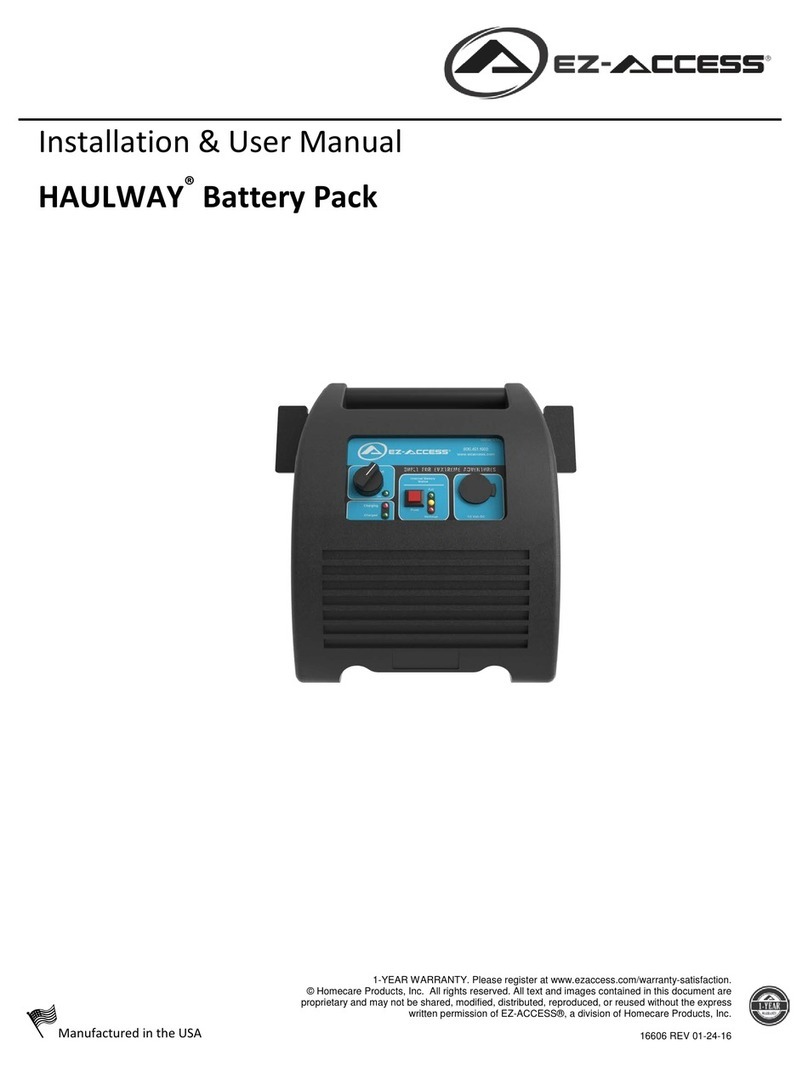
EZ-ACCESS
EZ-ACCESS HAULWAY Installation & user manual

Draper
Draper CB143 instructions
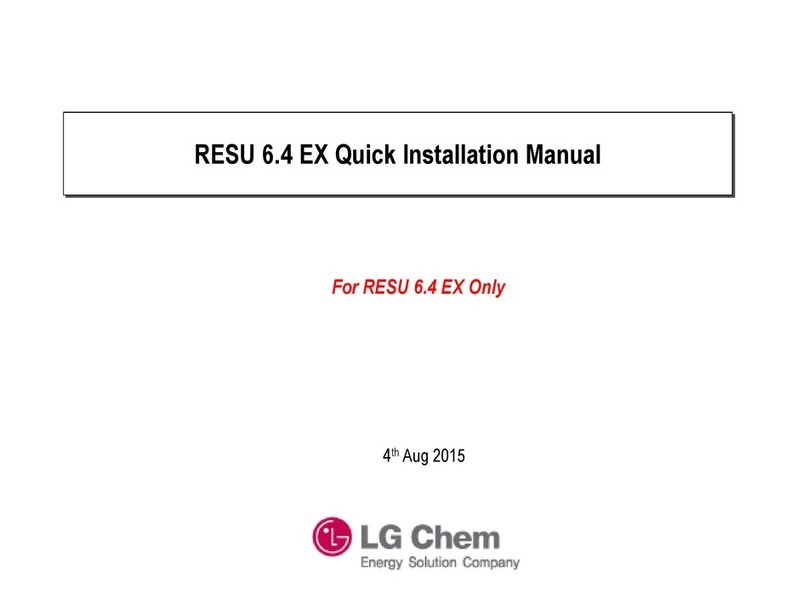
LG Chem
LG Chem RESU 6.4 EX Quick installation manual

Renkforce
Renkforce 1593803 operating instructions
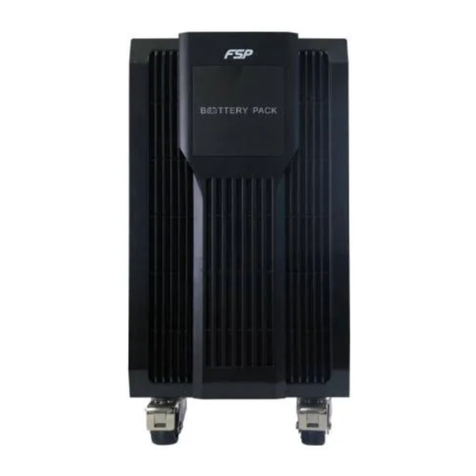
FSP Technology
FSP Technology Tower BB-192/09T user manual
